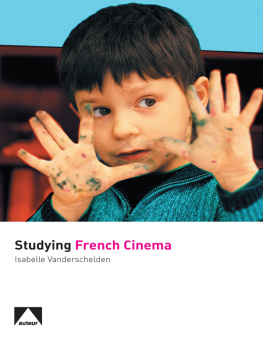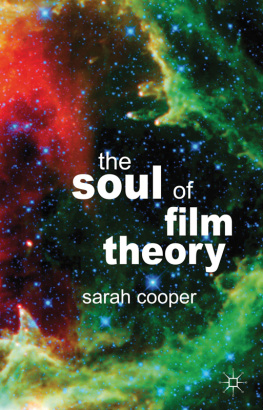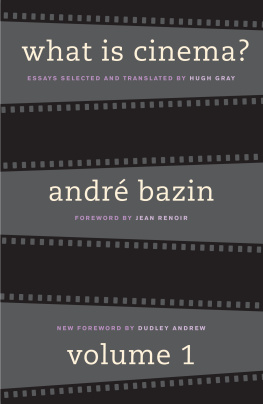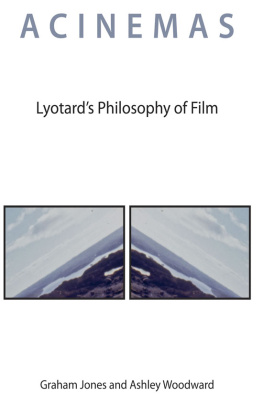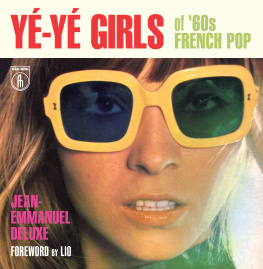CONCENTRATIONARY ART
CONCENTRATIONARY ART
JEAN CAYROL, THE LAZAREAN AND THE EVERYDAY IN POST-WAR FILM, LITERATURE, MUSIC AND THE VISUAL ARTS
Edited by
GRISELDA POLLOCK AND MAX SILVERMAN

First published in 2019 by
Berghahn Books
www.berghahnbooks.com
2019 Griselda Pollock and Max Silverman
Lazarean Dreams and Lazarean Literature were originally published together as Lazare parmi nous by Jean Cayrol. Editions du Seuil, 1950. Reprinted with permission.
All rights reserved. Except for the quotation of short passages for the purposes of criticism and review, no part of this book may be reproduced in any form or by any means, electronic or mechanical, including photocopying, recording, or any information storage and retrieval system now known or to be invented, without written permission of the publisher.
Library of Congress Cataloging-in-Publication Data
A C.I.P. cataloging record is available from the Library of Congress
Library of Congress Cataloging in Publication Control Number: 2019003769
British Library Cataloguing in Publication Data
A catalogue record for this book is available from the British Library
ISBN 978-1-78533-970-7 hardback
ISBN 978-1-78533-971-4 ebook
In memory of Len and Lili Silverman.
In memory of Lili Jampoller Couve and all who resisted in dark times.
CONTENTS
Max Silverman
Jean Cayrol
Patrick ffrench
Griselda Pollock
Max Silverman
Matthew John
Benjamin Hannavy Cousen
Griselda Pollock
Griselda Pollock
ILLUSTRATIONS
ACKNOWLEDGEMENTS
This book is the fourth volume of a four-year research project, Concentrationary Memories: The Politics of Representation (200711) funded by the Arts and Humanities Research Council of England. We gratefully acknowledge the Councils financial support for this project. We also want to thank the artist Susan Philipsz for her generosity in providing images of her work.
INTRODUCTION
LAZARUS AND THE MODERN WORLD
MAX SILVERMAN
Concentrationary Art is the fourth and final book in a series on the concentrationary. In our previous books in this series Concentrationary Cinema, Concentrationary Memories and Concentrationary Imaginaries Griselda Pollock and I outlined a theory that has its origins in the thinking of a number of French (and German) survivors of the vast network of concentration camps in Germany and Austria during World War II (totalling more than 10,000 camps), especially the analysis of the structural significance of the camp system that David Rousset expounded in his book LUnivers concentrationnaire (1946). (For a fuller discussion, see our introductions to the three books mentioned above.) In this volume, we would like to make a fuller case for the importance of the concentrationary and, more specifically, the new theory of art based on it, as formulated by Mauthausen survivor Jean Cayrol, which he called concentrationary art or Lazarean art. Cayrol formulated his concept of concentrationary art primarily in relation to literature; in this book, we will extend and develop the idea of the concentrationary, discuss Cayrols use of the figure of Lazarus to define this art, and highlight its links with other artistic practices, especially film and music, and contemporary cultural and social theories (such as theories of the everyday and critiques of modern forms of capitalism). We will also confirm the argument that runs through our whole series concerning the importance of Cayrols concentrationary aesthetic today and the need to distinguish it from broader discussions of art and the Holocaust.
Largely forgotten over the years, the work of Jean Cayrol has experienced a limited revival in the French-speaking world more recently, since his death in 2005 at the age of 93.
In March 1943 he was deported to the notorious Mauthausen-Gusen concentration camp complex in Austria under the infamous Nacht und Nebel decree, designed to make political resisters to Nazism disappear into the night and fog. It is his experience at Mauthausen-Gusen that forms the basis for Cayrols key concept of the survivor as a revenant from a state of death and will be at the heart of his ideas on concentrationary art.
On his return to France in 1945, Cayrol published in quick succession a collection of poems entitled Pomes de la nuit et du brouillard (1946) and his first novel, Je vivrai lamour des autres (1947), consisting of two parts, On vous parle and Les Premiers Jours. In the post-war period he stopped writing poetry (until 1969) and became a novelist, critic, essayist, filmmaker and editor. Through this prodigious output and his unfailing support of new writers and critics, he became one of the most important figures in post-war avant-garde culture and theory in France. In 1955 he wrote the narrated text for Alain Resnaiss film on the camps, Nuit et brouillard (Night and Fog), and also worked with Resnais on Muriel ou le temps dun retour (1962). In 1956 he established the journal crire at the Paris publishing house Editions du Seuil, whose principal aim was to foster young literary talent. It was the precursor to the better-known Tel Quel literary magazine that revolutionized theory in the 1960s. During this period, he championed figures such as Roland Barthes, Philippe Sollers, Marcelin Pleynet and Kateb Yacine (amongst many others) and was a significant influence on the development of the Nouveau Roman (though he was never considered one of its major practitioners).
In the English-speaking world, Cayrol has received little scholarly attention, and even that has been limited largely to his contribution to Nuit et brouillard. Written soon after the end of the war, the essays are based, in part, on Cayrols own experience as a political prisoner in Mauthausen-Gusen, but also on his reflections on literature in the post-war world. This volume consists of the first English translations of these essays and is accompanied by six new essays that explore different aspects of Cayrols theory and apply it to other cultural works.
Despite more recent interest in Cayrol in the French-speaking world, he is, nevertheless, still rarely mentioned in the context of the larger discussions about art and theory in the wake of the camps (and hardly ever in relation to theories of the novel).and others have been consistently evoked in recent years and their views are widely known. We believe that Cayrols notion of concentrationary art deserves to be considered alongside these views as a major contribution to these debates. We will suggest that Cayrols ideas on concentrationary art offer a different (though sometimes overlapping) perspective to more widely known theories. An understanding of these two essays allows us to reconfigure the field that now goes under the name of art and the Holocaust by challenging that category as a discrete entity unto itself and by reconnecting it with broader theory and practice. Beyond that, Cayrols theory gives us a powerful way of reading the hidden forms of disfigured and transformed humanity in the world today. This volume is, therefore, both an exploration of Cayrols theory of concentrationary art and a series of studies of its potential as a theoretical resource for the analysis of contemporary art and culture. In this introduction, I will first describe briefly the regime that Cayrol endured at the Mauthausen-Gusen concentration camp, then trace the main principles of concentrationary art that he formulated in the post-war period, primarily in
Next page

